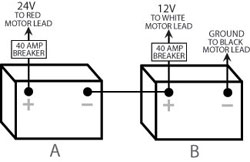I was trolling yesterday when I smelled burnt plastic and a few seconds later saw smoke coming out from under the ignition switch. I did a quick visual inspection and wires all looked Ok.
I have recently installed a 2nd battery (with NO switches) to supply for a 24V trolling motor and I wonder if it's just too much voltage that's causing the issue. I spoke with a technician at a marina this morning and he was suggesting that the ignition switch might be faulty and should be replaced.
Any idea what could be causing the issue and what other things should be checked/fixed before replacing the ignition switch? Thank you.
I have recently installed a 2nd battery (with NO switches) to supply for a 24V trolling motor and I wonder if it's just too much voltage that's causing the issue. I spoke with a technician at a marina this morning and he was suggesting that the ignition switch might be faulty and should be replaced.
Any idea what could be causing the issue and what other things should be checked/fixed before replacing the ignition switch? Thank you.


